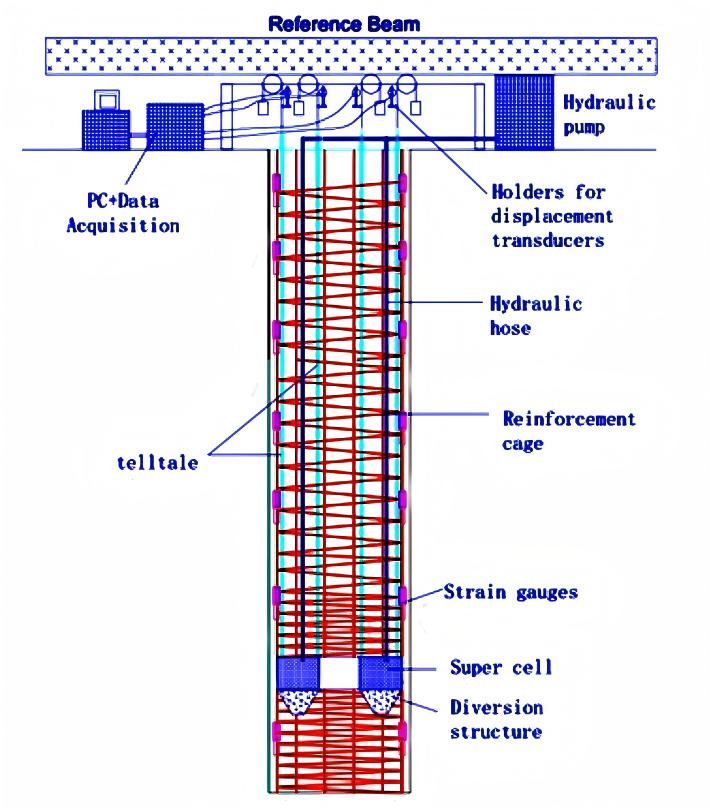Bi-directional Static Load Testing Technology
2025-02-17
What's Bi-directional Static Load Test?
Bi-directional static load test utilizes the hydraulically operated load cells, embedded inside pileshaft for test on pile loading capacity. Before instaling the foundation piles, the optimal location forload cell installation will need to be determined based on purpose of test, soil conditions and otherfactors. The embedded load cells are specially designed with built-in hydraulic jacks. Hydraulicpressure is applied to the load cells by hydraulic pumps on the ground, through hydraulic hosespre-connected with the load cells. The pressure in the load cell is measured by pressure gauges(pressure sensors); the displacements of the upper/lower parts of the pile shaft are measured bydisplacement transducers, which are connected to the load cell by embedded telltale rods.
When loaded, the load cell expands, pushing the upper shaft upwards and the lower shaft down-wards, which would mobilize the side friction and end bearing of the upper and lower lengths of thepile. Based on the relationship between the displacement, load and time, the loading capacities ofboth upper and lower portion of the pile may be determined. The combination of the side resistanceof upper and lower parts of pile shaft and the end bearing makes up the bearing capacity of thecomplete pile.

What's the Bi-directional Loading Testing Method?
Bi-directional loading testing method for foundation pile testing with Ougan Super Cells is widely used among load test companies, engineering consultancies, project owners and contractors. By 2016, Ougan was able to contribute to the geotechnical industry by providing Super Cells and service to more than 2,000 bi-directional loading tests within one year.
What's the Super Cell of Ougan Group?
Super Cell (Based with S-Type Hydraulic Jack ) are the most important equipment used in the bi-directional static loading test process for producing loading force. They are developed by Ougan Technology in 2005 and patented, featuring reliability, loading precision, and cost-effectiveness.



 33011802000764号 技术支持:杭州故乡人网络
33011802000764号 技术支持:杭州故乡人网络